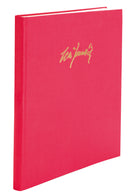| 作曲者 | Leoš Janáček (1854-1928)・ヤナーチェク |
| タイトル | The Danube Symphony |
| 出版社 | Bärenreiter・ベーレンライター |
| シリーズ名 | Kritische Gesamtausgabe der Werke von Leos Janácek; Complete Critical Edition of the Works of Leoš Janáček H/3 |
| 楽器編成 | Orchestra |
| 楽器編成(詳細) | Orch |
| 品番 | 9790260104211 |
| 編曲者 | Leos Faltus, Milos Stedron |
| 形状 | XXXIII, 117 ページ・34.3 x 27.0 cm・1058 g・布装丁 |
| 演奏時間 | 40分 |
| 出版番号 | BA 6861 |
| ISMN | 979-0260104211 |
Leoš Janácek's symphonic fragment Dunaj (The Danube) dates from the period of the composition of "Katya Kabanova". The composer was not concerned with a musical-picturesque description of a river landscape, but with the mythical link between women's destinies and water.
"Pale green waves of the Danube! There are so many of you, and one followed by another. You remain interlocked in a continuous flow. You surprise yourselves where you ended up – on the Czech shores! Look back downstream and you will have an impression of what you have left behind in your haste. It pleases you here. Here I will rest with my symphony." Thus Leoš Janácek described the idea behind the composition project which occupied him in 1923/24. However, after further work, it remained incomplete in 1926. His "symphony" entitled Dunaj has survived as a continuously-notated, four-movement bundle of sketches in score form. It is one of the works which occupied him until his death. The scholarly reconstruction by the two Brno composers Miloš Štedron and Leoš Faltus closely follows the original manuscript.
A whole conglomeration of motifs stands behind the incomplete work. What at first seems like a counterpart to Smetana's Vltava, in fact doesn't turn out to be a musical depiction of the Danube. On the contrary, the fateful link between the destiny of women, water and death permeates the range of motifs found in the work. It seems to be no coincidence that Janácek, whilst working on the opera Katya Kabanova, in which the Volga, as the river bringing death plays an almost mythical role, planned a Danube symphony, and that its content was linked with the destiny of women: in the sketches, two poems were found which may have provided the stimulus for several movements of the symphony. He copied a poem by Pavla Kriciková into the second movement, in which a girl remarks that whilst bathing in a pond, she was observed by a man. Filled with shame, the young naked woman jumps into the water and drowns. The outer movements likewise draw on the poem "Lola" by the Czech writer Sonja Špálová, published under the pseudonym Alexander Insarov. This is about a prostitute who asks for her heart's desire: she is given a palace, but then goes on a long search for it and is finally no longer wanted by anyone. She suffers, feels cold and just wants a warm fire. Janácek adds his remark "she jumps into the Danube" to the inconclusive ending.
To these tangible literary models is added Adolf Veselý's verbal account which reports that the composer wanted to portray "in the Danube, the female sex with all its passions and driving forces". The third movement is said to characterise the city of Vienna in the form of a woman.
It is evident that in his composition, Janácek was not striving for a simple, natural lyricism. The River Danube is masculine in the Slavic language – "ten Dunaj" – and assumes an almost mythical significance in the national character, indeed often also a role bringing death. The four movements are motivically conceived. Elements of sound painting, small wave-like figures in the first movement, motoric, driving movements in the third are obvious evocations of water. And the content and the literary level are easy to discover. The "tremolo of the four timpani", which was amongst Janácek's first inspirations, appears in the second movement. It is not difficult to retrace in it the fate of the drowning bather. The oboe enters lamentoso towards the end of the movement over timpani playing tremolo, its descending figure is taken over by the flute, then upper strings and intensified considerably. The motif of drowning – Lola's despair – returns again in the fourth movement in the clarinet, before the work ends abruptly and dramatically.
One special effect is the use of a soprano voice in the motor-driven third movement. The singer vocalises mainly in parallel with the solo oboe, but also in dialogue with other parts such as the viola d'amore, which Janácek used in several late works as a sort of "voice of love".



